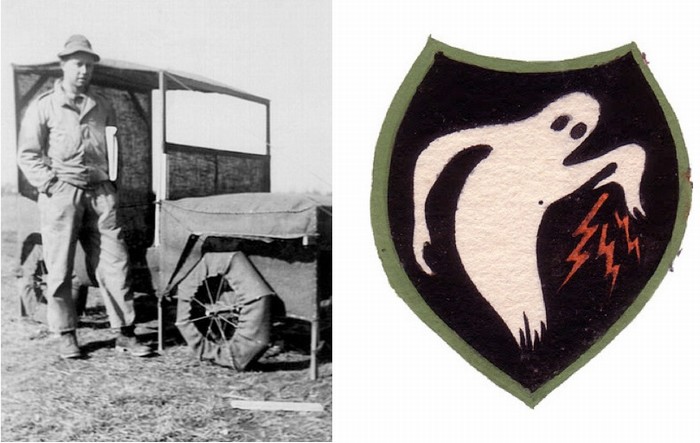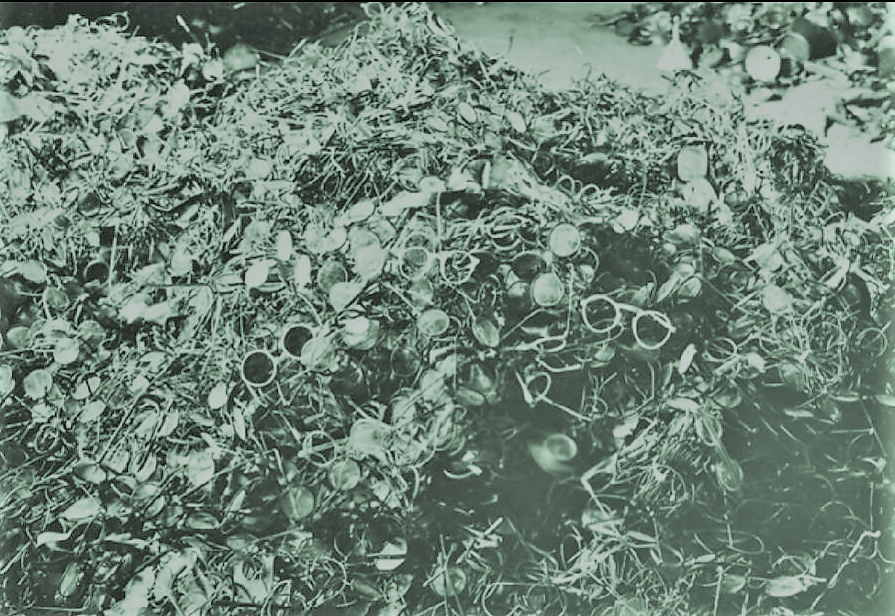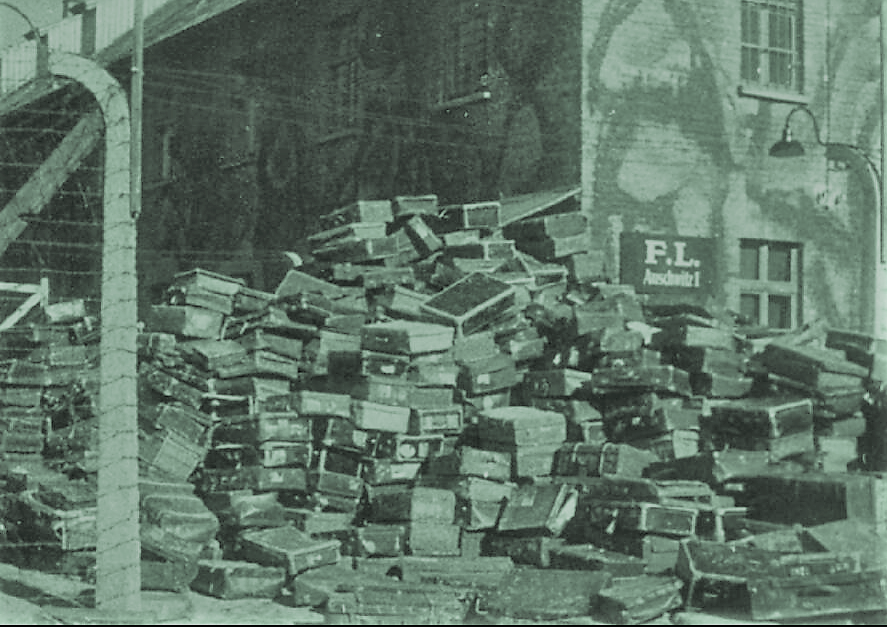
I know what you are thinking “We are still several months away from Halloween and he is already starting telling ghost stories”
Well yes and no, you see the Ghost Army wasn’t an army of real ghosts however it did scare many German units, without firing one shot.
During World War II, Americans of many different backgrounds and professions were drafted into the armed forces. One unit in particular, the 23rd Headquarters Special Troops of the U.S. Army, had an odd membership. This group was made up mostly of artists, architects, designers, sound engineers, and other creative types — all of whom had an IQ of at least 119. And while other units were given standard issue weapons and benefited from the employ of tanks and artillery, the 23rd was given a much different order.
The 23rd, known colloquially as the “Ghost Army,” would set up faux, inflatable battalions near German encampments (but away from the actual Allied forces) to try to throw off the enemy. These actors-as-soldiers would don different uniforms and insignias, with the hope of catching the eye of German intelligence — who, in turn, would report back (incorrect) estimates of manpower and location of Allied troops.

Shortly after the D-Day invasion on June 6, 1944, two Frenchmen on bicycles managed to cross the perimeter of the United States Army’s 23rd Headquarters Special Troops and what they saw astounded them. Four American soldiers had picked up a 40-ton Sherman tank and were turning it in place. Soldier Arthur Shilstone says, “They looked at me, and they were looking for answers, and I finally said: ‘The Americans are very strong.

Patriotic pride aside, the men of the 23rd were not equipped with super-human strength. They did, however, have inflatable tanks.
Shilstone was one of 1,100 soldiers who formed the unit, also known as the Ghost Army.

Inspiration for the unit came from the British units who had honed the deception technique for the battle of El Alamein in late 1942, as Operation Bertram.

The unit had its beginnings at Camp Forrest, Tennessee, and was fully formed at Pine Camp, New York (now Fort Drum), before sailing for the United Kingdom in early May 1944. In Britain they were based near Stratford upon Avon, and troops participated in Operation Fortitude, the British-designed and led D-Day deception of a landing force designated for the Pas-de-Calais.
he 3132 Signal Service Company Special handled sonic deception. The unit coalesced under the direction of Colonel Hilton Railey.
Aided by engineers from Bell Labs, a team went to Fort Knox to record sounds of armored and infantry units onto a series of sound effects records that they brought to Europe. For each deception, sounds could be “mixed” to match the scenario they wanted the enemy to believe. This program was recorded on state-of-the-art wire recorders (the predecessor to the tape recorder), and then played back with powerful amplifiers and speakers mounted on halftracks.

The sounds they played could be heard 15 miles (24 km) away.

Their efforts were reportedly successful. For example, the 23rd set up a fake “mulberry harbor” — an artificial military harbor used to offload cargo and troops onto beaches, such as at Normandy a few weeks after D-Day — diverting German attention away from the true landing locations. But the biggest success? The Washington Post noted that at times, the Ghost Army convinced German adversaries that they numbered as many as 30,000 troops, even convincing some units to surrender out of fear of being greatly outmatched.

Posing as the 30th and 79th divisions, 1,100 men had to pretend to be more than 30,000.
Mixing real tanks alongside the inflatable ones, the troops appeared to be assembling a massive attack. Their fake observation planes were so convincing, American pilots tried to land in the field next to them.

When the offensive finally made its move across the Rhine, with General Dwight Eisenhower and Prime Minister Winston Churchill watching, they were met with little German resistance. The riverbanks were left for the taking and the Ghost Army earned a commendation for its success.
Because the men had to keep their true purpose a secret, they regularly pretended to be other units. They’d mark their trucks with chalk or sew fake badges to throw off potential spies in the cities where they spent time off duty.
Set apart from other troops by their secret mission, the artists also brought an unusual perspective to war. Upon finding a bombed-out church in Trévières, several of them stopped to sketch the structure. When they stopped in Paris and Luxembourg, the men recorded everything from the beguiling women biking by to the scenic rooflines and street scenes.
Arthur Shilstone sketch of his unit digging in after their arrival in Normandy.

A sketch by Ghost Army artist Richard Morton

Visiting a Paris brothel was quite an eye-opener for Victor Dowd. “The ladies would come downstairs in their scanty costumes. I’m no Toulouse-Lautrec, but it was a great opportunity for me to draw. A woman named Doris sat on my table, she had a glass of wine in one hand, a cigarette in the other, high heels and practically no clothes on. She was trying to entice me to go upstairs. I wouldn’t have had to pay anything if I gave her the drawing. But I wasn’t particularly anxious to go upstairs with Doris, and I decided to keep the drawing.”

The U.S. Army may have used the tactic in other wars, as well, as the Ghost Army’s mission in World War II was kept classified until 1996 — and even today, many details are still kept secret.
These were just some men of the Ghost Army.
Irving McKane Nussbaum “Mickey”

M. Sgt. Forrest Lewis joined the Army in 1942 and was originally assigned to maintain barrage balloons around the Bremerton, WA. naval shipyards. After the defeat of the Japanese at Midway he was reassigned. He volunteered to join the 23rd HQ Co. Special Troops at Camp Forest, TN like many of the others. He traveled with them to England and land in France on June 23, 1944 with the bulk of the unit. He served in Brittany, Northern France, Luxembourg and Germany as did most of the troops in the unit. He was not an artist nor electronic technician but served with Headquarters Company within the unit.

Sergeants James Taylor and Forrest Lewis.

The “Diggers”

Anthony Young























You must be logged in to post a comment.